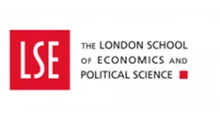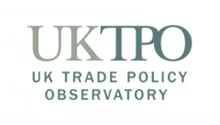Explore
- 🇬🇧 UK
- 🇺🇸USA
- 🌎 Environment
- Social
- Elections
- Energy
- 🇺🇦Ukraine
- Education
- 🇮🇹Italy
- 🥇Olympics
- Prices & interest rates
- Science, technology & innovation
- Jobs, work, pay & benefits
37% of children in 3+ child families in the UK live in absolute poverty (after housing costs) – up 3pp since 2010.Child poverty has fallen for 1–2 child families, but it has risen for larger families.With the two-child benefit cap to be scrapped, will this change?Click here to read Lucinda Platt on what has happened to child poverty in the UK over the last 30 years.#ChartOfTheDay
The Bank of England kept interest rates at 4% in September, with a 7–2 vote by the Monetary Policy Committee. Two members backed a cut to 3.75%, but sticky inflation — CPI held at 3.8% in July and August — kept the majority cautious.The MPC also slowed the pace of quantitative tightening (reducing the stock of government bonds it holds), trimming planned gilt sales from £100bn to £70bn over the next year. This follows concerns that the Bank's policy and rate of bond sales, unusually high by international standards, has been inflating bond yields and government borrowing costs.The next MPC decision is due 6th November 2025.
Gold has climbed to an all‑time high today, rising past $ 3,500 per ounce amid growing expectations of a U.S. Federal Reserve rate cut and a softer U.S. dollar. Click on the chart to read Philip Fliers on why gold is seen as a safe haven asset.
This chart shows an example of reductions in the costs of new technologies over time, highlighting the dramatic fall in the real cost of computer memory and storage over time. In the space of just a few decades, the cost of computer (random access) memory dropped exponentially, from hundreds of trillions of dollars per terabyte in the 1950s to around a thousand dollars per terabyte today.
Global cocoa prices are up almost 18% on last year, following dry weather across West Africa and the spread of a disease affecting cacao trees.Click on the chart to read more about food inflation from Finn McEvoy.
How do AI skills compare across industries in the G7?LinkedIn data show that in the UK, AI skill adoption is highest in the technology, information and media sector, and lowest in healthcare.Financial services is another strong adopter: 4% of LinkedIn members report an AI-related role or skill. It’s also the only sector where the UK leads the G7 nations.Click here to read how the target sectors in the UK’s Industrial Strategy compare across the G7.
On Monday, April 28, 2025, Canadians will vote in a federal general election to elect members of the House of Commons to the 45th Canadian Parliament. ?Over the past five months, polls have shown a sharp reversal in fortunes. Once trailing significantly, the Liberal Party, led by Mark Carney, now maintains a narrow lead.
In 1971, the UK’s female employment rate lagged men’s by nearly 40 percentage points. Today, that gap stands at just 6.4%. Interestingly, major economic shocks often spurred this convergence, as recessions hit male-dominated industries hardest. Economists refer to this as a “man-cession” effect, though it also reflects longer-term sectoral shifts that favour service and knowledge-based work. Other factors include the “added worker” effect—where some women join the labour force when male earnings drop—and the possibility of “forced renewal,” where post-layoff hiring opens doors for more women. So, do recessions boost gender equality—or simply speed up changes already in motion?Saturday 8th March









































